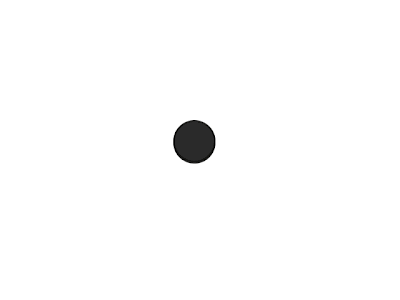

Today begins a new series on our community's Blog! The series is entitled, "Faith Illustrations" and is based on a number of computer generated symbolic drawings that I did while I was a student of theology. Each illustration depicts some aspect of the mystery of the Christian and Catholic faith. The point and purpose of each illustration is to demonstrate that our faith is meant to be dynamic and contemporary: drawing forth the insights from tradition and contemporary Christian theology/spirituality and "wrapping" them in new metaphors, symbols, and imagery in order to convey the mystery in a compelling and relevant way.
The above illustrations depict the process of "divinization" or "theosis" in the life of the human person, specifically, one who lives a Christ-like life. Before we consider what each sequence in the top illustration signifies, please go to the bottom picture, place your mouse arrow on the black circle, and click (the picture is an animated file and will depict the above drawing in a more dynamic manner). Now let's move on to an explanation of the illustration and the animated version of it.
The black circle represents the "primordial" or "rudimentary" elements of what constitutes the human person. From a psychological standpoint, it symbolizes unconsciousness. The second sequence, entitled, "let there be light", signifies the dawning of human consciousness. This process unfolds slowly. This is represented in the animated picture by the grey circle gradually emerging from the black one. In terms of evolution, it took perhaps thousands of years (or more) for the "light to go on" in the human mind and heart. With regard to human development, from the time of birth, consciousness gradually grows in a child until it reaches the heights of being able to distinguish between "me" and "you" (developmental psychologists believe that autobiographical consciousness, meaning the realization of "me" or "I" dawns at around the age of five).
In the third sequence, "Let us Make Humans", a clear circle emerges from the black and grey circles. This circle symbolizes the dawning of "transcendent consciousness", "religious consciousness", or "spiritual consciousness". Very basically, this is the awareness of the "something more" to life, the awareness of meaning, value, the unsurpassable worth of every person and the dignity of every creature, it is the experience of God. The fourth sequence, "The Word Became Flesh and Dwelt Among Us," is signified by the ancient Celtic "Triquetra" symbol emerging in the middle of the black, grey, and clear circles. The triquetra, of course, represents the Trinity. It's placement in the middle of the circles symbolizes the Incarnation of Christ and how, as a result, the Triune God, Father, Son, and Spirit, dwells within humanity.
Up to this point in the drawing, it's important to note that each sequence represents a process that is largely involuntary. We don't choose to have an unconscious, conscious, nor even transcendent conscious. These aspects of the human mind, heart, spirit, and soul are a given, or, are gifted. Certainly, we can be more or less open to developing them. This is important to note because in the fourth sequence, the element of choice becomes paramount. The rotation of the clear circle to the top of the circles represents the choice to live one's life for ultimate or transcendent meaning (living for God and others).
When one makes the choice to live for God and others, this results in the Trinity diffusing itself throughout a persons life to the point that they become "divinized" or Christ-like. This, of course, is represented by the "collapse" of all the circles into one, beautiful, bright, and brilliant "circle of light."
This drawing depicts in dynamic fashion how our entire being is meant to be filled with God's love, such that we are "transformed from Glory to Glory" and so that "God can be all in all." May we all be "circles" of light and love for God, others, and ourselves! Pat, TOR
Saturday, October 30, 2010
Faith Illustration: Transformed from Glory to Glory
Subscribe to:
Post Comments (Atom)
0 comments:
Post a Comment